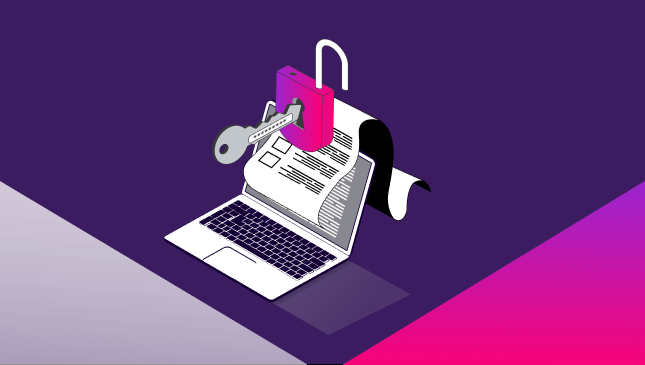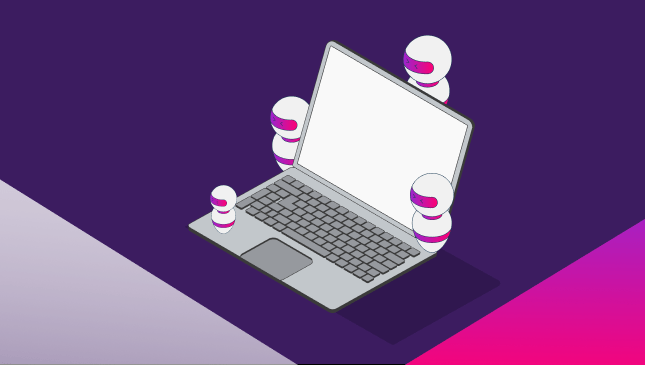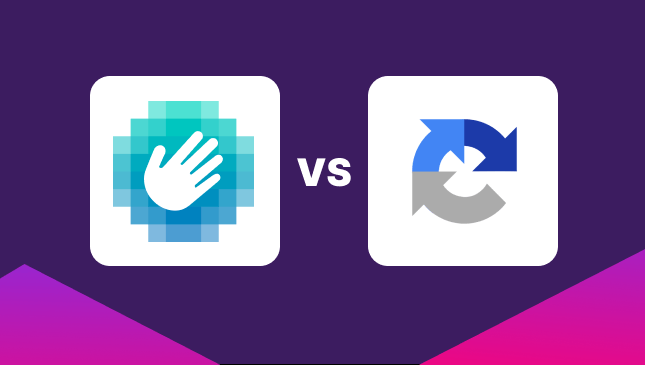How Bot Protection Can Save Your Digital Presence
Sanja Trajcheva
|Website Ops & Security | July 26, 2023

In today’s digital world full of bad bots, bot protection is essential more than ever. These malicious actors are everywhere, constantly posing threats to security, privacy, and the integrity and reputation of businesses online.
And in 2023, almost no business can say it runs fully offline. Even the smallest local farm products shop would have at least an Instagram account.
To stay safe in this digital environment, first, you must be aware of the damaging consequences bots can have on your business.
From stealing your website content, gathering sensitive information from your business and customers, and even disrupting your ads, bots can seriously hurt your reputation online.
So if you want to protect your resources and maintain an effective digital presence, keep reading, as we’re about to explore how you can achieve this with bot protection.
Understanding Bots
Bots are a piece of code designed to perform the actions of a human. Just like everything they do, they do it much more quickly and at a scale.
For example, bots can scan a website and collect information in a fraction of a second, while for us as humans, it will take hours, or even days, to go through it, filter, and collect a specific set of information.
Behind their efficiency lies a combination of algorithms and predefined rules. These rules act as their compass, enabling them to analyze user input and generate suitable responses.
Whether it’s assisting with customer support, indexing web content, or, unfortunately, engaging in malicious activities like data theft, bots come in various forms to serve different purposes.
Are bots dangerous?
This is a question many businesses and individuals ask themselves when it comes to dealing with these automated entities. And the answer is not a simple yes or no.
While there are legitimate and useful bots that serve various helpful purposes, such as search engine crawlers and chatbots, there are also malicious bots. And these can cause a significant threat.
So basically, it all comes down to the intentions and the purpose behind the bots and how they are used.
The purpose of the bots
Bots were originally created to simplify our daily lives and have been around since the early days of the Internet.
The oldest internet bots can be traced back to 1988 with the emergence of Internet Relay Chat (IRC). These bots, in their early versions, provided automated services and prevented server closure due to inactivity.
The initial idea behind bots was to complete helpful tasks. By automating processes, they take care of repetitive tasks that consume our time and energy daily.
Unfortunately, it didn’t take long for malicious fraudsters to exploit the ‘bot wave’ and create their own fraudulent bots, aiming to profit from the internet era.
As internet usage increased, bad bots started to dominate the digital environment. Approximately 47.7% of online traffic is now attributed to bot traffic, with around 39% of it originating from bad ones. These bad bots are designed to harm businesses and prioritize their own financial gain.
Considering the threat posed by bad bots, investing in bot protection becomes crucial for businesses that understand the importance of protecting their online presence and mitigating the risks associated with malicious bot activities.
To understand their purpose better, let’s explore some of the common tasks bad and good bots usually perform.
Good bots
Good bots can perform a range of practical activities online. They carry out repetitive or complex actions, freeing up humans for more important work. Think of them as digital assistants with specific functions.
For instance, instead of going through the statistics of your ads on different platforms and combining all of them to come up with utilized reporting, a reporting tool can accomplish this within seconds. And not to mention that the chances for the bot to make a mistake are nonexistent.
Here are some of the most common tasks that good bots can handle to make businesses more effective:
Site monitoring: Monitoring bots keep track of website healthiness. If they detect issues or errors with response time or page load speed, for example, they then send notifications or take automated actions to resolve the problems.
Web scanning and indexing: The bot types known as web spiders or crawlers systematically browse the internet to discover and index web pages. Search engines commonly use them to make your website and content discoverable.
Customer support: Also known as chatbots, these bots interact with customers to provide assistance and answer their queries. They can be instructed to provide product information, process simple transactions, or offer basic troubleshooting guidance. This leads to shorter wait times, reduced resolution times, and better customer satisfaction.
Marketing automation: Marketing bots are designed to automate various marketing tasks and processes. These bots can save time and resources by automating repetitive tasks for marketing teams, such as social media posting, lead nurturing, and campaign monitoring.
Data analysis: Bots can also assist with data analysis tasks by performing automated data processing, analysis, and reporting. They can handle large volumes of data, generate pre-defined reports, and provide valuable insights or visualizations.
Bad bots
Bad bots are malicious programs designed to harm your online presence or the visitors to your website by engaging in various harmful activities.
For example, they may send spam messages, steal sensitive data, or manipulate your online ads. Click fraud, for example, is a common practice in how bad bots are used by fraudsters to profit from your advertising budget.
These bots are typically developed by cyber criminals, fraudsters, or individuals involved in illegal activities. Even your competitors can employ bad bots to damage your business.
Unfortunately, bad bots have become more advanced over time. Many of them now imitate human behavior, making it difficult to distinguish them from real users.
Here’s how bad bots harm your business:
Web scraping: Hackers can steal web content by crawling websites and copying their entire content. As a result, fake or fraudulent websites can use stolen content to appear legitimate and manipulate visitors.
Spamming and phishing: Bots can be used to generate and distribute large volumes of unsolicited emails or comments, often containing deceptive links or fraudulent requests, as part of spamming and phishing attacks.
Account takeover: Bad bots are often employed to carry out credential-stuffing attacks. They use automated scripts to systematically attempt login credentials obtained from data breaches on multiple websites to gain unauthorized access to user accounts.
DDoS attacks: Bots can be used to launch Distributed Denial of Service (DDoS) attacks on websites and servers. By coordinating with multiple bots, attackers can overwhelm a website or online service with a flood of malicious traffic, rendering it inaccessible to legitimate users.
Click fraud: Some bots can generate fraudulent clicks on online advertisements, artificially increasing click-through rates (CTR) and depleting advertising budgets. This practice is commonly employed to sabotage competitors or earn profits from ad networks.
Price and inventory manipulation: Bots can be used to scrape prices from e-commerce websites and undercut competitors. By automatically scanning and monitoring prices, bots can dynamically adjust prices or create false scarcity to deceive consumers or gain a competitive advantage.
To better understand bad bots and how they can hurt your business, you can check this article.
Why do you need to protect yourself from bad bots?
In a world where bad bots dominate the digital environment, protecting yourself against their harmful activities is crucial for your business security. Whether they’re crafted by cyber criminals, fraudsters, or even your competitors, bad bots can cause various troubles to your business.
Their detrimental impact can result in significant sales losses, compromised ad performance, diminished customer loyalty, and bad brand reputation. Also, organizations often experience substantial financial setbacks, legal expenses, penalties, and reputational damage due to bot attacks.
You can avoid these troubles by proactively implementing bot protection measures. By taking action against these bot threats, you can potentially save millions of dollars and strengthen the resilience of your online presence.
How to stop bad bots?
Bot protection and keeping your business safe against bots is an ongoing and challenging process. Addressing this threat effectively requires a comprehensive approach, as there is no one-size-fits-all solution.
However, there are some steps that you can take to minimize the risks associated with bad bots. Let’s explore a few recommendations:
Understand your vulnerabilities: It is crucial for businesses to continuously evaluate and enhance their security measures to outsmart hackers. Understanding the nature of the threat is vital, and if you’re aware of your weaknesses, it’s easier to come up with a well-defined plan to avoid such threats.
Detect, categorize, and control: One of the initial steps for bot protection involves detecting bot traffic. With regular monitoring of your metrics in Google Analytics, for example, you can certainly spot some unusual patterns that might indicate bot traffic.
Once identified, the subsequent action is to classify the type of traffic. If it’s recognized as legitimate bot traffic, such as that from search engines, it should be allowed to pass. However, known malicious bots or bots with uncertain intentions should be blocked.
Explore bot protection solutions: The issue of bots presents an ongoing battle for businesses. And if in the early stages of bot attacks, a few adjustments could offer protection, now it’s nearly impossible for you to keep pace on your own. Bots became much more sophisticated, making manual protection almost ineffective. That’s why bot protection solutions like CHEQ Essentials should be considered for full protection.
How do bot protection solutions ensure your safety?
Bot protection solutions are designed to protect online businesses by preventing malicious bots from causing harm.
These solutions utilize advanced machine learning algorithms to analyze traffic patterns and detect bot activity. They also employ behavioral analysis techniques to detect bots that attempt to imitate human behavior.
By identifying the typical patterns of malicious bots, these solutions can effectively distinguish them from genuine human users. This allows them to block bot traffic before it even reaches your website or ads, thus ensuring the safety and reputation of your online presence.
At CHEQ Essentials, we offer a multi-layer protection package. It covers paid marketing protection and website bot mitigation. This will protect your PPC campaigns, ensuring that your marketing budget is maximized while effectively preventing access to your website by malicious bots.
So, if you haven’t started your bot protection journey yet, take the first step with our free trial here.











